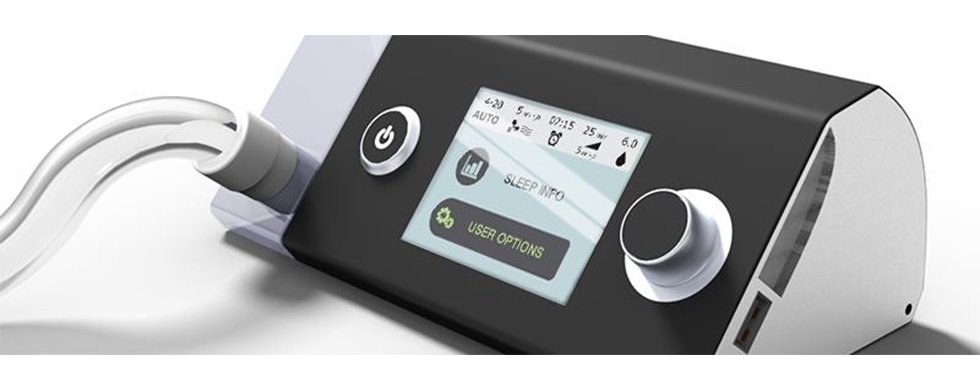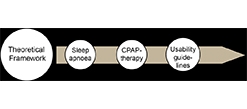CPAP Device
Design and Usability development of a CPAP device - For safe sleeping
Summary
This master thesis work is carried out on behalf of i3tex, a consulting company working with product development in various business areas. The project concentrates on a user-centred approach for developing a medical device for use in a home environment. The development process, including how to work with usability aspects to ensure a user-friendly product, is a key deliverable.
The product in focus is a CPAP (Continuous Positive Air Pressure) device. It is mainly used to treat sleep apnoea, a sleep disorder that causes the breathing to repeatedly be interrupted during sleep due to blocked airways. A CPAP device keeps the upper airways open by applying a positive air pressure through a tube and a mask. In this project the iSleep 25, a CPAP device developed by Breas in 2004, is used as a reference product.
The project follows the ACD3 process (Lars-Ola Bligård), which is a product development process with a man-machine focus. In the process, the product goes from being abstract to concrete via a number of steps where the product becomes increasingly detailed.
The foundation of the development work is a theoretical framework with useful guidelines and an exploration of the typical users and their needs, the use context, and the CPAP market. Two main user groups were identified – sleep apnoea patients and medical professionals working in sleep laboratories. The product has been developed with both user groups in mind.
Based on the acquired knowledge about the users and the use context, a modified use procedure could be defined. Technological applications such as telemedicine provide new possibilities in the medical domain, some of which have been implemented to create an updated use procedure for patients and medical personnel.
The project covers surface design of the CPAP device as well as design of the graphical user interface. These parts have been developed parallelly to create a complete and unified product. The appearance and expression of the product is based on value words defined by the project workers with the users in mind. The value words are Simple, Reliable and Humble. Moodboards for each of the value words were created and turned into form drivers that could then be transformed into form concepts and interface concepts.
The form concepts were combined with functional solutions using a morphological matrix. It generated many concepts that were then reduced to three final concepts, complete with sub-functions such as handle, physical interface layout and defined position for the tube outlet, etc. Quick mock-ups were then created for evaluation with CPAP users.
The architecture of the menu was based on the menu structure of the iSleep 25, but was rearranged to better meet the users’ needs and requirements. The graphical part of the interfaces was developed together with the menu structure since the two are heavily connected. Four interface concepts were evaluated by CPAP users online via example images of the interfaces.
Finally, detailed concepts consisting of a more refined outer shape and an improved interface were developed. It was validated through a usability test with eight participants. In the test, the interface was shown on a smartphone that was placed as a dummy display. The images were streamed to the smartphone from a computer controlling the interface via a PowerPoint presentation. The product was refined further based on input from the usability test, and then realised through CAD renderings.
Skriv ut ![]()


